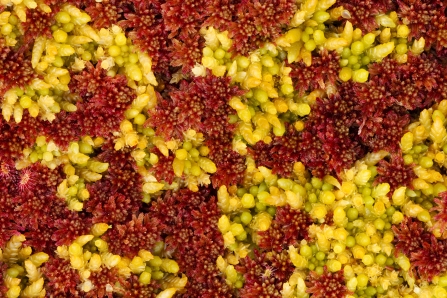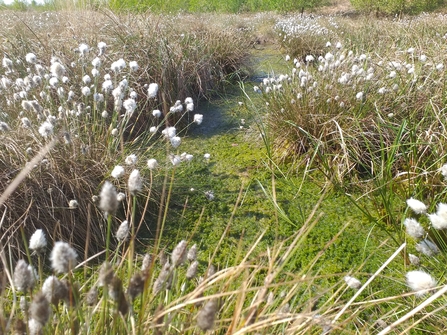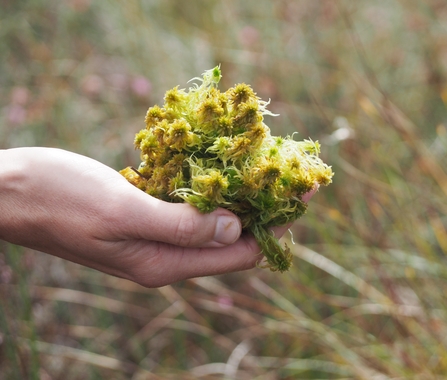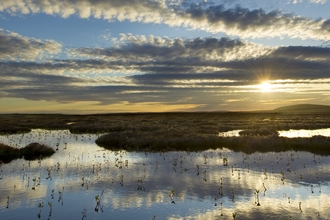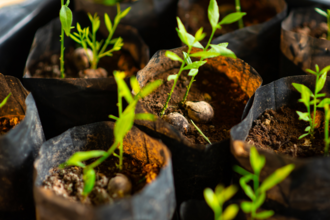We find mosses everywhere; on damp shady walls, in our lawns, and growing along the edge of paths. And whilst all moss is special, sphagnum moss is very special indeed. Sphagnum moss is found on peatlands and other wet habitats, and is in fact the keystone species of our precious peatlands.
Like all mosses, sphagnum is a non-vascular plant which means that it grows without roots and absorbs all of the water and nutrients it needs directly through the surface of its leaf-like scales. Sphagnum in particular thrives in wet and acidic conditions. In fact, sphagnum moss is able to actually change the pH of its habitat, making it more acidic to suit its preferred growing conditions.


